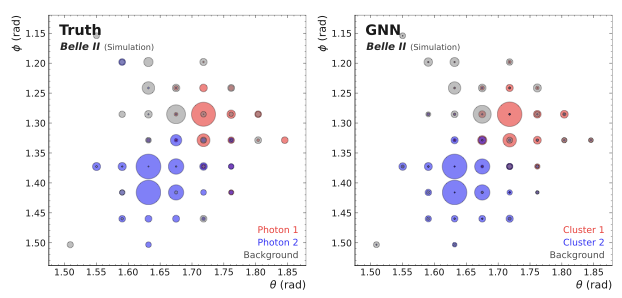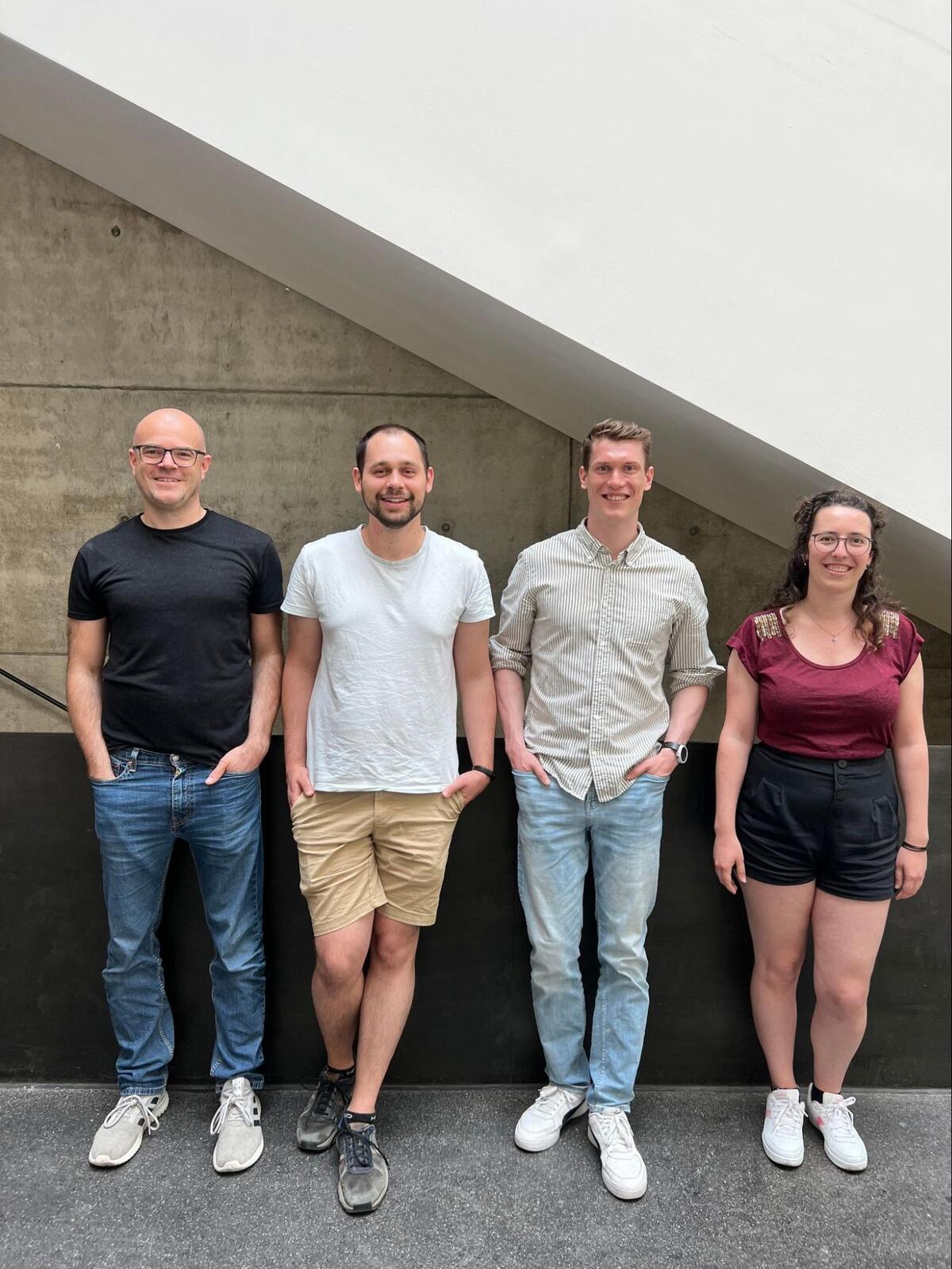Artificial Intelligence Assembles Particles
A new artificial intelligence has been developed at Karlsruhe Institute of Technology KIT's Institute for Experimental Particle Physics (ETP) that can determine the energies of photons in the Belle II experiment with unprecedented accuracy. The study is available as a preprint.
The Belle II experiment at the Japanese research centre KEK in Japan investigates collisions of electrons and positrons at extremely high collision rates. The international team of researchers wants to get to the bottom of one of the greatest mysteries of physics - why we exist at all. In order to observe previously unknown processes during the collisions or to carry out measurements with extreme precision, the energy of photons produced during the collisions must be measured as precisely as possible.
This is what the Belle II detector's electromagnetic calorimeter is responsible for. It consists of almost 9000 caesium iodide crystals with thallium doping arranged around the collision point. The thallium doping ensures a particularly high light yield and thus a very good energy resolution of the Belle II crystals. These crystals are able to measure the energy deposited in them, but also the arrival time of the particles and other properties with the highest precision. In most cases, several crystals register parts of the energy of a single high-energy photon that was created in the collision. At the same time, the crystals register energy from various background processes that need to be separated from the photon energy.
The AI developed at KIT is based on Graph Neural Networks and is able not only to determine which crystals have registered the energy of a photon, but also to find out how much of this energy actually comes from each photon. This feature also allows it to distinguish photons that are so close to each other that their energy is registered by the same crystals. Differently from the previous algorithm, the AI also uses information from neighbouring crystals and can relate them to each other.
This is complicated by the fact that the Belle II detector is asymmetrically constructed and crystals differ in shape and size. This information is easier to process with the very flexible Graph Neural Networks and can thus surpass the precision of the algorithm used so far.
To train the algorithm, the researchers used the TOpAS GPU Cluster of the Steinbuch Centre for Computing (SCC) at KIT.
As a next step, the AI is supposed to learn how to measure other particles such as neutrons or neutral kaons.
Contact person: Prof. Dr. Torben Ferber



